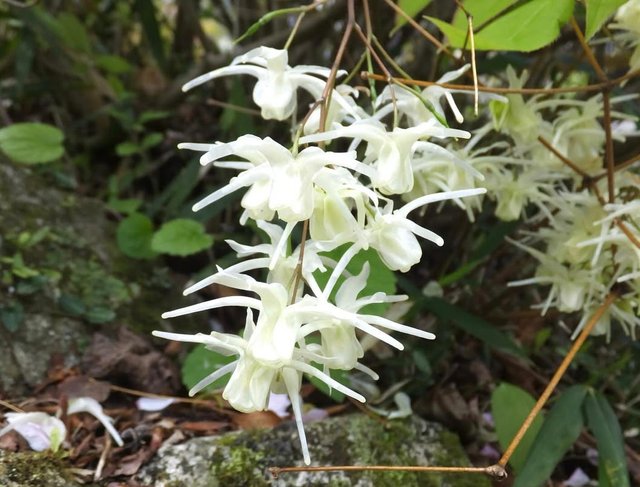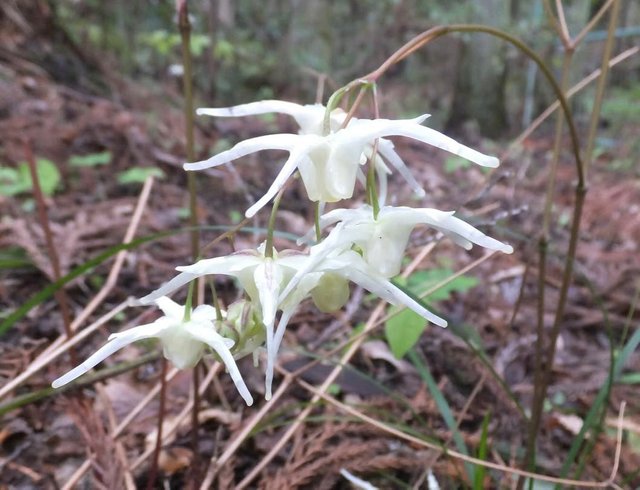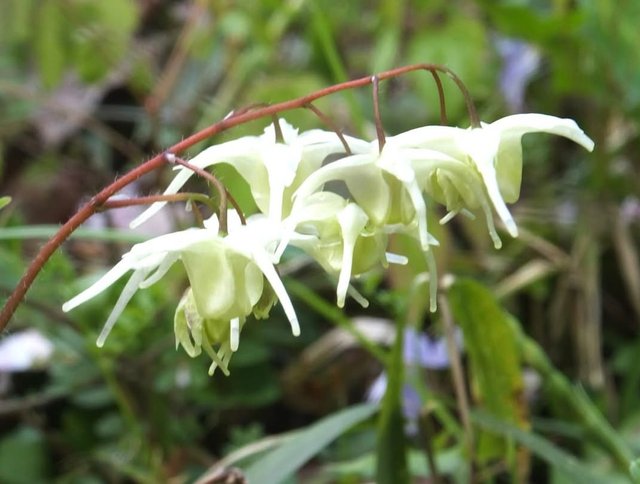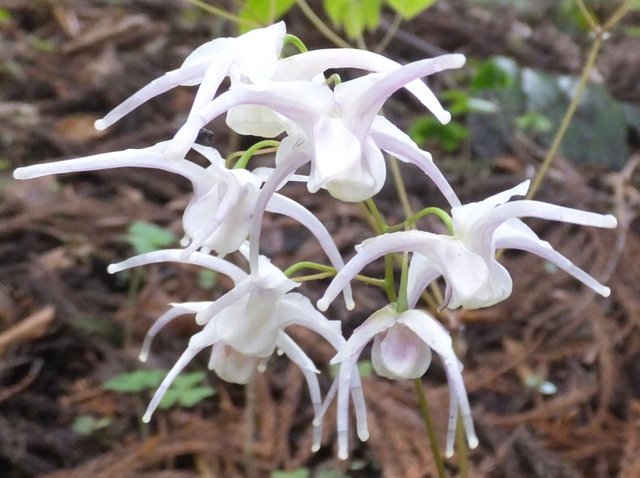Epimedium grandiflorum
Epimedium grandiflorum, commonly known as Bishop’s Hat, Barrenwort, or Fairy Wings, is a charming and often underappreated perennial that belongs to the Berberidaceae family. Native to woodland regions of Japan, Korea, and parts of China, this delicate plant has gained favor among gardeners not only for its dainty, orchid-like flowers but also for its resilience, unique foliage, and shade-loving qualities.
What makes Epimedium grandiflorum particularly alluring are its flowers, which typically appear in mid-spring. The blooms are intricate and whimsical, with long, spurred petals that resemble tiny, fluttering fairies—hence the nickname “Fairy Wings.” They come in a variety of colors, depending on the cultivar: soft purples, pinks, creamy whites, and even yellows.Unlike many woodland perennials, this plant blooms with impressive enthusiasm and can put on a generous show in a shady or dappled-light location. The flowers hover above wiry stems, often dancing in the breeze, lending a magical aura to the garden.
The foliage of Epimedium grandiflorum is just as notable as its flowers. The heart-shaped leaves emerge with a bronze or reddish tint in spring before maturing to a rich green. In fall, the foliage often takes on hues of red, orange, or copper, offering year-round interest. Some varieties are even semi-evergreen in milder climates.The texture and form of the leaves give the plant an elegant, almost architectural quality. They also form dense, weed-suppressing clumps, making the plant a good choice for ground cover in shady borders or under trees and shrubs.One of the reasons Epimedium grandiflorum is beloved by gardeners is its adaptability and hardiness. Here are some of its basic growing needs:
Maintenance: Low. Trim old foliage in early spring before new growth emerges to keep the plant tidy and highlight fresh leaves and blooms.
Epimedium grandiflorum is perfect for woodland gardens, shady rock gardens, or as a soft edging plant along paths and borders. Its ability to tolerate dry shade makes it ideal for planting beneath mature trees or in other hard-to-fill garden spaces. Pair it with ferns, hostas, hellebores, or pulmonarias for a textured and layered shade planting.



